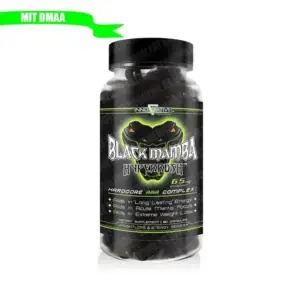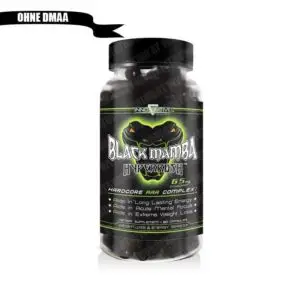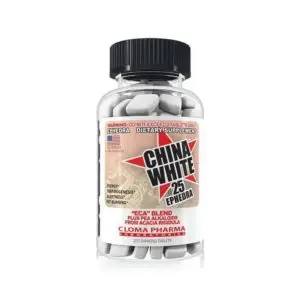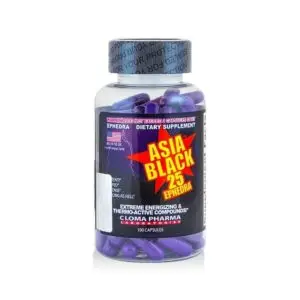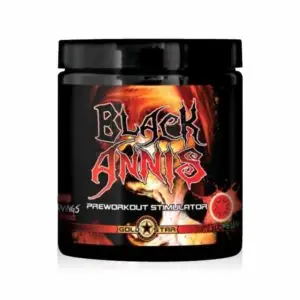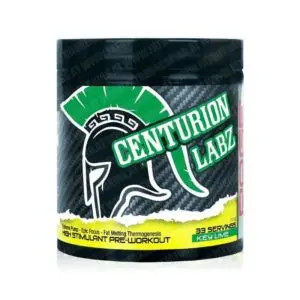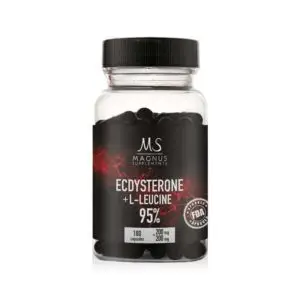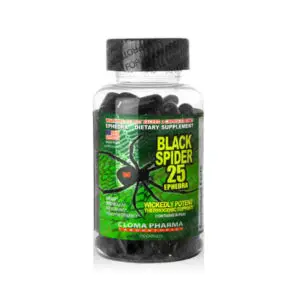BPC 157, short for Body Protecting Compound 157, is a synthetic peptide that was originally developed to heal injuries and promote wound healing. Its properties to support the musculoskeletal system and promote regeneration make it of particular interest to athletes. In addition to healing injuries, BPC 157 also appears to have a positive effect on athletic performance and general health.
In this article, we will examine the effects of BPC 157 in sports in detail, analyze the benefits for athletes and shed light on the optimal dosage and possible side effects. Let's dive into the many possibilities that this peptide offers for athletes.
What is BPC-157?
BPC-157 is a synthetic peptide based on a natural protein. It was originally called Body Protection Compound, although this name can be misleading as its main function is to accelerate healing processes. It promotes the formation of new tissue and stimulates the production of collagen and other proteins necessary for tissue repair.
Some of the notable properties of BPC-157 include:
- Angiogenesis: Supports the formation of new blood vessels, which are important for the regeneration of tendons, ligaments and joints.
- Wound healing: Promotes skin regeneration and minimizes scarring.
BPC-157 is usually injected subcutaneously, as oral administration is problematic due to the preservation of biological activity. However, there are now analogous forms that can be taken orally.
| Application methods |
Advantages |
| Subcutaneous injection |
Effective tissue repair |
| Oral intake |
Convenient, but controversial |
Due to its healing-accelerating effect, BPC-157 has a high potential for use in medicine, especially in regeneration and pain relief.
Mechanism of action of BPC-157
BPC-157 stimulates the production of growth factors and promotes blood circulation in damaged areas of the body. BPC 157 is a very effective peptide when it comes to accelerating the regeneration of passive structures. At the same time, the peptide inhibits the formation of inflammatory cytokines, which reduces inflammation and decisively supports the healing process. In addition to promoting angiogenesis, BPC-157 contributes to the formation of new blood vessels, which optimizes the healing of tendons, ligaments and joints in particular.
A notable aspect of BPC-157 is its application in the form of transdermal patches. These allow the active ingredient to be delivered directly to the injured area, which increases its effectiveness. In addition, the peptide promotes the development of fibroblasts, which play a key role in collagen synthesis, and thus effectively supports wound healing and general tissue healing.
How BPC-157 promotes healing
BPC-157 is known for its ability to support the healing and regeneration of wounds, skin injuries, ligament injuries, tendon injuries and even bone fractures. It exhibits significant anti-inflammatory and pain-relieving properties that make an additional contribution to the healing process. By promoting angiogenesis, it improves blood flow to the tissue, which is essential for the reconstruction of blood vessels.
Another positive effect of BPC-157 is that it supports the formation of granulation tissue, which is important for the deposition of collagen and wound healing. BPC-157 also has a positive influence on the digestive system and the stabilization of blood pressure, which supports general health promotion during recovery.
Advantages of the healing effects of BPC-157:
- Anti-inflammatory: Reduces inflammation and supports the healing process.
- Pain relief: Relieves pain associated with injuries.
- Angiogenesis support: Promotes the formation of new blood vessels and improves tissue perfusion.
- Granulation tissue: Supports the formation of new tissue during wound healing.
- Gastrointestinal health: Has a positive effect on the digestive system and stabilizes blood pressure.
Influence on the musculoskeletal system
BPC-157 accelerates the regeneration of injuries in the musculoskeletal system. Studies have shown positive effects on muscle and tendon injuries, especially chronic inflammation such as tendinitis. The peptide improves joint flexibility and mobility, facilitating movements that were previously restricted by pain.
Another benefit for athletes is the ability of BPC-157 to reduce the risk of overuse injuries by speeding up recovery. It also supports joint health and can help with osteoarthritis in the knee and shoulder area in particular. These multiple positive effects make BPC-157 a valuable tool in the treatment of musculoskeletal injuries.
Influence on the musculoskeletal system
BPC-157 shows impressive effects on the musculoskeletal system and plays a crucial role in accelerating the regeneration of injuries. Clinical studies show positive effects on muscle damage and tendon injuries. The peptide also has targeted anti-inflammatory properties that are effective in chronic tendon inflammation such as tendinitis.
Advantages of BPC-157:
- Regeneration: accelerates the healing of muscles and tendons
- Pain relief: relief from tendonitis
- Joint health: Helpful for osteoarthritis, especially in the knee and shoulder area
- Flexibility: improvement in joint mobility
Athletes also benefit from the use of BPC-157, as it can reduce the risk of injury by aiding recovery from overuse injuries. At the same time, it improves the flexibility and mobility of the joints, making it possible to perform movements that were previously difficult without pain.
Overall, the positive effects of BPC-157 show a promising future for the health and regeneration of the musculoskeletal system.
Advantages of BPC-157 for athletes
Support for regeneration
BPC-157 has been shown to be effective in promoting recovery from injury. It shortens the healing phase even for serious injuries such as torn muscles or ligaments, allowing athletes to return to training more quickly. By supporting angiogenesis, i.e. the formation of new blood vessels, BPC-157 improves blood circulation and thus the regeneration of tendons, ligaments and joints. Its anti-inflammatory properties significantly accelerate recovery after injuries, which reduces the risk of injury for people who are active in sport.
Improving athletic performance
Athletes benefit from BPC-157 through faster recovery, which enables a more intensive and more frequent training routine. This shortened recovery time makes it possible to quickly increase training intensity again. In addition, BPC-157 increases the level of neurotransmitters such as serotonin and dopamine, which has a positive effect on mood and motivation for intensive training. The improved blood circulation through angiogenic effects contributes to a better nutrient supply to the tissue, which further increases athletic performance.
Reduction of high blood pressure
BPC-157 also shows positive effects on the cardiovascular system, particularly in the reduction of high blood pressure. By influencing vasodilation, the widening of blood vessels, blood pressure is lowered safely and without side effects. Studies have shown that BPC-157 causes rapid and sustained vasodilation in aortic rings, effectively lowering blood pressure and supporting overall heart health.
Positive effects on the digestive system
In the digestive system, BPC-157 promotes healing and function, especially after surgery or damage to the gastric mucosa. It can reverse the toxic effects of non-steroidal anti-inflammatory drugs in the digestive tract and also improve blood circulation by stabilizing blood pressure and producing nitric oxide. Influencing the activity of neurotransmitter systems such as serotonin and dopamine can also have protective effects against pain in the digestive system.
Overall, BPC-157 offers a high application potential in various areas for athletes by promoting regeneration as well as general physical function and health.
Support for regeneration
BPC-157 is a remarkable peptide that supports regeneration in the body. It promotes the healing of wounds and skin injuries, thereby accelerating the regeneration process. A major benefit of BPC-157 is its positive effect on angiogenesis, the renewal of blood vessels. This improves blood circulation and promotes the healing of tendons, ligaments and joints.
The anti-inflammatory properties of BPC-157 are also remarkable. They help to significantly accelerate the healing process after injuries, especially in the case of serious injuries such as muscle tears and tendon ruptures or tears.
For physically active people, BPC-157 offers the potential to reduce the risk of injury. It also makes it possible to train more intensively after shorter periods of rest.
Dosage of BPC-157
BPC-157 is a promising peptide that is available in different forms and can vary depending on the dosage and method of administration. The correct dosage is crucial to reap the maximum health benefits of this peptide.
The recommended daily intake of BPC-157 is 200 to 300 micrograms, depending on body weight, application and therapeutic goal, which corresponds to approximately 3 µg/kg for a body weight of 80 kg. For intramuscular injections, a dosage of 500 to 800 micrograms per day is considered effective, with an expected improvement in symptoms within 7 to 14 days.
Oral capsules containing BPC-157 vary in content between 250 and 1,000 micrograms. It is important to note that the bioavailability of oral preparations is lower than that of injections. It may therefore be necessary to choose a higher daily dose in order to achieve the same effects. For transdermal application via patches, a dose of 1,000 micrograms per patch is considered sufficient for daily requirements. For severe pain, up to 350 micrograms twice daily may be required, as documented in clinical studies.
Forms of application (injection, oral administration)
BPC-157 can be administered orally in capsule form or by injection. Each form has its specific advantages and application properties. The injectable version is often injected directly into the affected painful areas in order to achieve a targeted effect. This method enables higher bioavailability and often faster results.
In contrast, oral intake has a systematic effect throughout the body. Despite the lower bioavailability, the oral form can offer advantages due to the systematic effect throughout the body, especially in the case of chronic systemic complaints. With oral preparations, care must be taken to adjust the dose to compensate for the lower bioavailability.
Another alternative is transdermal drug delivery via BPC-157 patches / BPC-157 patches, which release a dose of 1,000 micrograms per patch, providing a sufficient daily dose. This method offers continuous drug release and can provide convenient application without invasiveness.
The BPC-157 patches are generally better for the active ingredient BPC157, as it can work better locally on painful areas. TB-500 patches, on the other hand, can also be used in other areas as it has a more full-body effect.
Possible side effects of BPC-157
BPC-157 is a peptide that is considered promising in the areas of pain relief, regeneration and healing of joints. However, despite its positive effect and high application potential, there are also possible side effects that should be taken into account.
When taking BPC-157, general side effects such as dizziness, loss of appetite, nausea, hot flushes and fatigue may occur. However, these have not yet been fully researched, as the scientific data on BPC-157 is limited. Despite the natural presence of BPC-157 in stomach acid, no specific side effects are known to date.
Possible BPC-157 side effects:
- Dizziness
- Loss of appetite
- Nausea
- Hot flushes
- Fatigue
Caution is required, particularly in professional sport, as BPC-157 is listed in the category "Non-authorized substances S0". Its use can therefore lead to a positive doping test.
For these reasons, it is crucial to carefully weigh up the potential risks before use in order to avoid unwanted health consequences.
Conclusion on BPC-157 in sport
BPC-157 is a peptide that offers athletes remarkable benefits in recovery and healing. By accelerating the healing phases, it enables athletes to return to training more quickly. Particularly helpful are its anti-inflammatory properties, which are beneficial for tendinitis and relieve tendon irritation.
Another benefit of BPC-157 is the promotion of angiogenesis, which improves blood flow to tendons, ligaments and joints, thereby promoting the regeneration of these tissues. This improved blood flow also supports collagen production, which accelerates tissue repair and wound healing after injury.
Advantages of the BPC-157 at a glance:
- Accelerated healing
- Anti-inflammatory treatment for tendinitis
- Improved blood circulation
- Increased collagen production
Despite these positive effects, BPC-157 is considered doping in sport due to its classification as an unauthorized substance. Therefore, athletes should consider its use carefully. Its use may offer potential benefits, but it is important to be aware of regulatory restrictions.

